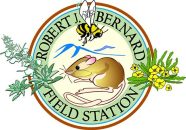Staubus, Weston (2014)
Comparison of ant communities in coastal sage scrub, non-native grassland, and adjacent suburban habitats in Los Angeles County: Conservation implications.
Bachelor of Arts, Pomona College, Biology.
Advisor: Wallace Meyer.
Human incursion and invasion by non-native grasses have eliminated coastal sage scrub (CSS) from over 85% of its historic range. Much of the remaining CSS habitat is fragmented and surrounded by suburban development. In addition, many fragments have been invaded by Argentine ants (Linepithema humile), which competitively exclude most native ants where they become established, dramatically reducing diversity. The effects of habitat fragmentation and invasion on ant communities in CSS fragments are not well known. In this study, I investigated the ant communities in and around a single CSS fragment located within the Robert J Bernard Biological Field Station (BFS), an approximately 35 hectare research station in Claremont, California. In addition to CSS, the BFS also contains a distinct non-native grassland habitat. The close proximity of these habitats to each other and the surrounding suburban matrix presents a rare opportunity to examine differences among ant communities in each habitat, without confounding variables such as dispersal or climate variation. I surveyed ant communities in each habitat type (CSS, non-native grassland, and suburban) and examined patterns of species richness and composition in and among habitat types. I also compared ant species richness and composition at the BFS to 40 more coastal fragments surveyed by Suarez et al. (1998) in San Diego County. While species richness did not differ significantly among habitat types, composition did. Each habitat type supported species not found in the others. I also found that while Argentine ants were less abundant in the CSS than in the suburban habitat, they were even more strongly excluded from the grassland. Compared to similar fragments in San Diego, the BFS supported unusually high richness. This may be due to reduced success of Argentine ants in more arid CSS fragments. I also collected several species at the BFS that were not found in coastal San Diego County. My results indicate that both CSS and grassland habitat should be preserved to maximize ant diversity. Furthermore, compared to coastal fragments, inland fragments may be less susceptible to invasion, and therefore be critical to conservation of native ant species.
